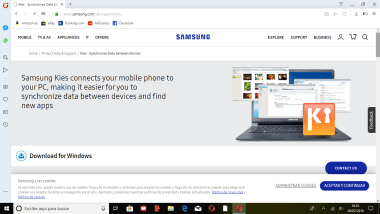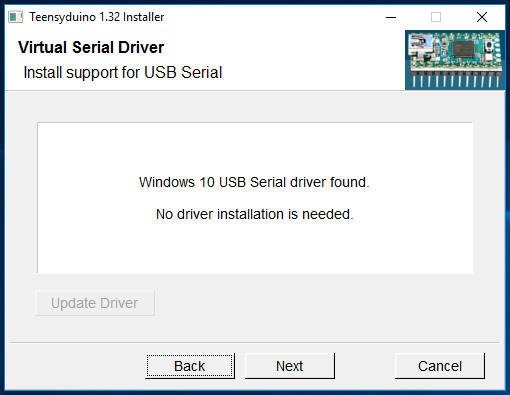On this page there are links to download driver software writtenby Meinberg, and also associated manuals inAdobe PDF format.
- Download Timekeeping Port Devices Drivers
- Download Timekeeping Port Devices Driver Windows 7
- Download Timekeeping Port Devices Driver
A library of over 250,000 device drivers, firmware, BIOS and utilities for Windows. Latest Drivers Downloads. Synaptics PS/2 Port TouchPad Driver 19.0.11.1 64. Drivers: EA-MG-PGM-CBL drivers Drivers for the EA-MG-PGM-CBL USB-to-serial cable (Windows 2000 SP4, Windows XP SP2, and Windows Vista(32/64 bit), Windows 7 (32/64 bit), Windows 8 and 8.1 (32/64 bit), Windows 10) Industrial Monitors Drivers for Atlas Industrial Monitors. All devices operating in MTP mode are supported. Note: The MTPdrive is not a replacement for the device's factory (or Windows default) device driver. You must be able to connect your device to the computer and have it visible in the Windows Explorer, before it can be mapped as a drive letter using the MTPdrive.
There is driver software for the following operating systems available:
On Unix-like operating systems all Meinberg radio clockswith a serial port are supported by the public domainNetwork Time Protocol (NTP)package. Under Windows NT/2000 and newer, NTP canbe used together with Meinberg's driversto synchronize additional computers on the TCP/IP network.
NTP software and manuals are available at our NTP download page.
Download MEINBERG NTP / PTP Simulation Software (Demo):
Download Timekeeping Port Devices Drivers
- MPSv2 Change Log
Recommended operating systems: Linux Mint ≥ 18.3 (64 bit) or Ubuntu ≥ 18.04.
Additionally there are some utilities available for download:
- Meinberg Device Manager (Windows and Linux)for configuration and monitoring of Meinberg receivers via the serial interface or network connection(supersedes the gpsmon32 monitoring software)
- MBG Flash Used to update firmware of radio clocks and otherdevices with flash memory.
More Ressources:
- Software Development Kits SDKs for different programming languagesand development environments to access a Meinberg device from within an own applications.
- Shapes for Microsoft Visio Shapes for various Meinberg systemsand accessories, to be used with Microsoft Visio
- SNMP MIB Files Management Information Base files for various Meinberg systemsand accessories, to be used with SNMP-based Network Management Systems like HP OpenView or IBM Tivoli.
Driver Software for all Windows versions since Windows NT
| Windows NT up to Windows 10 Windows Server 2019 Platform i386 (32 Bit) Platform x64 (64 Bit) Software dkwin-3.10.exe July 2, 2020 1.5 Mbytes How to verify integrity of the downloaded file Release Notes | The driver package can be used to synchronize the computer's system time.It supports all Meinberg plug-in radio clocks for PCs with PCI or ISA bus,all Meinberg USB devicesand all external radio clocks which are connected to a serial portof the computer (COM port) and transmit theMeinberg standard time string. The Meinberg Time Adjustment Service runs in the backgroundand keeps the system time synchronized with the radio clock's time. The monitoring utility MBGMON can be used to start, stop,control, and monitor the time adjustment service. The program isalso used to monitor and configure the supported plug-in boardsand USB devices. Detailed information on the software can be found in the onlinehelp of the monitoring utility. The public domain NTP software packagecan be used together with this driver package to synchronize additionalcomputers over the TCP/IP network. |
Driver Software for DOS, Windows 3.x/9x
| DOS Windows 3.x Windows 9x Software dkdos223.zip August 14, 2007 127505 bytes Manual German softdos.pdf Manual English softdos.pdf | The driver package for DOS/Windows 3.x/Windows 9.x supports allMeinberg plug-in radio clocks for PCs.This driver does not support radio clocks connected via aserial interface. The resident driver (TSR) reads the time from a radio clockin periodic intervals and sets the computer's system time. If the computer operates in DOS text mode the current radio clock timecan be displayed in a box at a corner of the screen. The monitoring program PCPSINFO shows the radio clock's and theTSR's status information and can be used to setup configurableparameters of the plug-in cards. Hint for PCI Cards: If Windows starts up after a new PCI card has been installedit tries to locate a driver for the new card. Every popupdialog should be acknowledged by pressing OK, so Windowswill install an 'unknown device'. After Windows startup has been completed, the DOS driver canbe installed normally. Attention: Version Information:DKDOS223:
|
| Windows 9x Windows ME Software win9xv13.zip August 11, 2003 539326 bytes Manual German mbgtimemon.pdf Manual English Not available | In addition to our resident DOS/Windows driver (see above), there is a driver for Windows 9x/MEavailable that supports time synchronization over a serial interface. The driver package for Windows 9x can be used with all external radio clocks which areattached to a serial port of the computer (COM port) and transmit theMeinberg standard time string. The driver package reads the time from a radio clock in periodic intervals and sets the computer's system time. Time deviations will be ascertained and corrected by the driver program. The driver runs in the backgroundand keeps the system time synchronized with the radio clock's time.The driver will be shown in the windows traybar. Additionally, the program is used to display status informationfrom the clock and of the current time synchronization as well. |
Driver Software for Linux


| MBGTOOLS for Linux Kernel 5.x Kernel 4.x Kernel 3.x Kernel 2.6.x Platform i386 Platform x86_64 Software mbgtools-lx-4.2.14.tar.gz 2020-10-20 800k bytes SHA512 Checksum: mbgtools-lx-4.2.14.tar.gz.sha512sum How to verify integrity of the downloaded file Release Notes git-Repositiory | Important notice: This archive contains a Linux driver module for Meinbergplug-in radio clocks with PCI or ISA bus, and Meinberg USB devices.This driver is only required for plug-in radio clocks and USB devices.Radio clocks which are connected via a serial interface are directly supported byNTP. The driver allows access to a plug-in radio clock from a userprogram, and additionally implements a device which makes theradio clock available as a reference clock forNTP. The driver is shipped as source code and has to be compiled on the target system.The current version 4.x can be used with Linux kernels 2.6.x, 3.x, 4.x and 5.x up to at least 5.9. Supported hardware architectures include Intel/AMD 32 bit (i386, standard PC)and 64 bit (x86_64). For more detailed information and installation instructionsplease refer to the README file which is included inthe archive. |
Download Timekeeping Port Devices Driver Windows 7
Driver Software for FreeBSD
| MBGTOOLS for FreeBSD FreeBSD 8.x bis FreeBSD 12 Platform i386 Platform x86_64 Platform ARM Software mbgtools-fbsd-1.0.0.tar.gz 2017-07-06 550k bytes SHA512 Checksum: mbgtools-fbsd-1.0.0.tar.gz.sha512sum How to verify integrity of the downloaded file git-Repositiory | This archive contains a FreeBSD driver module for Meinbergplug-in radio clocks with PCI bus.This driver is only required for plug-in radio clocks.Radio clocks which are connected to the PC via a serial interface are directly supported by theNTP software. The driver allows access to a plug-in radio clock from a userprogram, and additionally implements a device which makes theradio clock available as a reference clock forNTP. The driver is shipped as source code and has to be compiled on the target system.The current version 1.0.0 can be used with FreeBSD 8 up to FreeBSD 12. Supported hardware architectures include Intel/AMD 32 bit (i386, standard PC)and 64 bit (x86_64), and ARM. For more detailed information and installation instructionsplease refer to the README file which is included inthe archive. |

Download Timekeeping Port Devices Driver
Driver Software for Novell NetWare
| NetWare 3.1x NetWare 4.x NetWare 5.x NetWare 6.0 NetWare 6.5 Software dknw240.zip August 14, 2007 115804 bytes Manual German softnw.pdf Manual English softnw.pdf | The driver package for Novell NetWare supports allMeinberg plug-in radio clocks for PCs and all radio clockswhich send out the Meinberg standardtime string via serial RS-232 interface. A time server NLM (NetWare Loadable Module) can be loadedon a file server which has a radio clock installed. The time serversoftware keeps the file server time synchronized with the radioclock's time and displays the radio clock and time synchronizationstatus. With a plug-in radio clock forDCF77 the NLM can also be usedto check the received signal and second marks. Additionally, the time server NLM makes the disciplined file servertime available on the IPX network. A time client NLM can be loaded on additional file serverswithout own radio clock. The time client queries the reference timefrom a time server NLM running on another file server on the network. The time server NLM can also send IPX broadcast time packetsto the network which can be received by DOS/Windows workstations tokeep workstation time synchronized to the file server time. A memory resident IPX broadcast receiver for DOS/Windows 3.x/Windows9x is part of this driver package. Workstations with modern operating systems can usually be synchronizedTCP/IP, using the Network Time Protocol (NTP).NetWare 5 and later also supports NTP direktly.The Netware server which has the role of a timeserver should run TIMESYNC.NLM v5.23or newer since NTP support in earlier versions of TIMSYNC:NLM has some bugs. Version Information:DKNW240:
|
Driver Software for OS/2
| OS/2 2.1 OS/2 Warp OS/2 Warp 4 Software dkos2205.zip August 14, 2007 39206 bytes | The driver package for OS/2 supports all Meinberg plug-inradio clocks for PCs. This driver does not support radio clocks connected via aserial interface. The package includes a device driver and an utility runningunder the OS/2 Presentation Manager. The utility shows theradio clock's status and synchronizes the computer's systemtime to the radio clock's time. With a plug-in radio clock forDCF77 the utility can also beused to check the received signal and second marks. |
GPSMON32 (out of support since 2017-06)
| GPSMON32 for Windows Software mbg-gpsmon32-v228.exe 2013-07-15 726,195 Bytes | This utility can be used to configure Meinberg GPS receivers via their serial ports. The program has initially been written to be used with our GPSreceivers which do not have an own display. However, it can beused with any Meinberg GPS receiver with serial interface. Detailed information on the program can be found in the online help. Please note: |
MBG Flash Program

| MBGFLASH for Windows Software mbgflash-1.13.exe August 20, 2014 570 KB | This utility can be used to update the firmware of radio clockswhich have an onboard flash memory via the clock's serial port.Simply download and run the EXE file to install the utility. Additionally, a firmware image file is required which is uploadedto the device. Be sure to use an image file which is appropriatefor the type of device. |
Visio Shapes
| Visio Shapes for MS Visio 2003 ZIP File meinberg_visio_shapes-2015.zip 2015-11-23 16 MB | This ZIP archive contains some .VSS files to be used with Microsoft Visio, containing shapesfor various Meinberg NTP time server models and radio clocks, representing these systemsin different form factors and types in your Visio drawings. The files were created and have been tested with MS Visio 2003.Other versions for Visio 2000 and Visio 2002 are available on request. More details about Microsoft Visio can be found onMicrosoft's Visio Homepage. |
SNMP Management Information Base (MIB) Files
| SNMP MIB Files ZIP Archive meinberg-mibs.zip 2020-04-09 62 kB | These files are required by most SNMP based network management systems in order to access the informationprovided by Meinberg products via SNMP. Files included for SNMP-ROOT, LANTIME V5/V6/V7, XPT, FDMXPT, RSC (MDU), meinbergOS (microSync), SyncBox/N2X. |

| ||||||||||||||||||||||||||||||||




